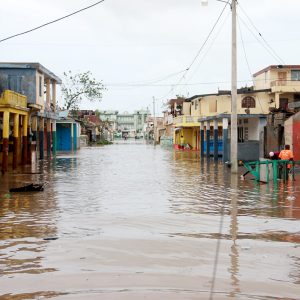Results for 'forecasts'
Found 522 results.
June 2024 Quick Look
As of mid-June 2024, waning El Niño conditions persist only in the western equatorial Pacific (between 160E to 160W), while other oceanic and atmospheric indicators now align with ENSO-neutral conditions. Almost all models in the IRI ENSO prediction plume forecast ENSO-neutral for Jun-Aug, 2024, which persists in most models during boreal summer seasons of Jul-Sep, and Aug-Oct, 2024. La Niña becomes the most probable category in Sep-Nov, 2024 through Jan-Mar, 2025, while for Feb-Apr, 2025 ENSO-neutral conditions become dominant (52% chance).
Similar to the most recent official CPC ENSO Outlook (issued on June 13, 2024), the objective IRI model-based ENSO outlook forecasts indicate ENSO-neutral conditions for Jun-Aug 2024, and La Niña thereafter. However, there is a notable difference between the probability numbers in the early-month CPC and mid-month IRI ENSO forecasts. The CPC ENSO forecasts predict a 65% chance of La Niña onset in Jul-Sep 2024, which then persists with increasing probabilities reaching into the low 80s during the boreal fall and winter seasons. In contrast, the objective IRI ENSO forecasts show a late onset of La Niña conditions in the equatorial Pacific (50% chance in Aug-Oct 2024), with persistence into the fall and winter, though with lower probabilities ranging from 51% to 58%. The forecasts then predict a return to ENSO-neutral conditions in February-April 2025. The low probability numbers reflect a high level of uncertainty in the forecasts, due to the relatively low skill of seasonal forecast models at this time of year. Therefore, these ENSO forecasts should be interpreted with caution.

Celebrating Women in Science: Amanda Grossi on Advancing Food Security
Adapted from a story written by Olga Rukovets for the State of the Planet news site. As a Las Vegas native, Amanda Grossi grew up surrounded by more than just casinos. “It’s a very ecologically interesting place and close to some amazing geologic and natural wonders—canyons, wetlands, mountains and forests,” Grossi says. These unique landscapes, […]
Calibrated probabilistic sub-seasonal forecasting for Pakistan’s monsoon rainfall in 2022
Author(s):

Extreme Weather is Necessitating a Shift in Humanitarian Action
Adapted from a story written by Renee Cho for the State of the Planet news site. Andrew Kruczkiewicz has spent much of his career trying to get ahead of the weather. As a meteorologist and senior staff researcher at Columbia Climate School’s International Research Institute for Climate and Society, Kruczkiewicz’s current research focuses on extreme […]
ENSO Resources
The El Niño Southern Oscillation (ENSO) phenomenon contributes significantly to seasonal climate fluctuations in many regions of the globe, often with social and economic implications for human populations and the environment. This site provides details of the current forecast status of ENSO conditions, as well as background information on both the physical phenomenon and some […]
CPT Release Notes
version 18.4.1 (2024-06-25) Implemented new option to save EOF and CCA loadings as correlations (option 134). Enabled output of SVG maps. Restored cursor if an SVG file is unavailable. Fixed problem restoring sub-season length from project files, version 18.3.2 (2024-06-10) Corrected indication of the type of principal components used. Fixed possible problem changing the type […]
CPT
The Climate Predictability Tool The Climate Predictability Tool (CPT) is a software package for constructing a seasonal climate forecast model, performing model validation, and producing forecasts given updated data. Its design has been tailored for producing seasonal climate forecasts using model output statistic (MOS) corrections to climate predictions from general circulation model (GCM), or for […]

Frontline Heroes: Predicting Climate Extremes in Africa
Originally posted in Columbia Climate School State of the Planet Blog, November 14, 2023, Francesco Fiondella Africa already experiences some of the gravest impacts of climate change, with recurring and persistent drought, extreme heat and extreme rainfall experienced throughout the continent. Recent flooding throughout West and Central Africa has displaced over 8.5 million people, pushing […]
